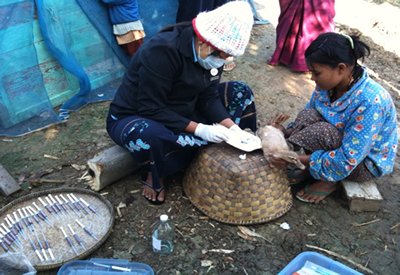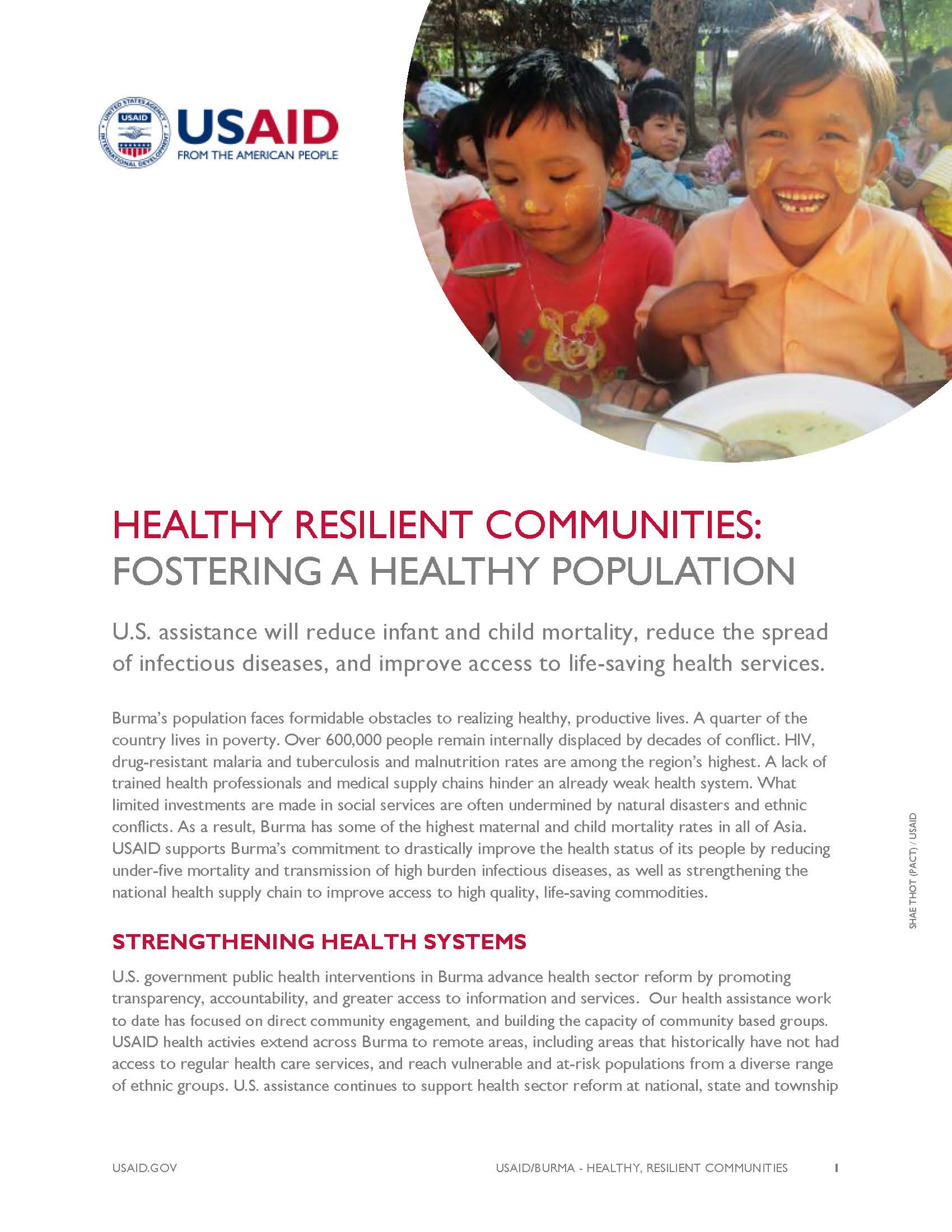
OVERVIEW
U.S. assistance will reduce infant and child mortality, reduce the spread of infectious diseases, and improve access to life-saving health services.
Burma’s population faces formidable obstacles to realizing healthy, productive lives. A quarter of the country lives in poverty. Over 600,000 people remain internally displaced by decades of conflict. HIV, drug-resistant malaria and tuberculosis and malnutrition rates are among the region’s highest. A lack of trained health professionals and medical supply chains hinder an already weak health system. What limited investments are made in social services are often undermined by natural disasters and ethnic conflicts. As a result, Burma has some of the highest maternal and child mortality rates in all of Asia. USAID supports Burma’s commitment to drastically improve the health status of its people by reducing under-five mortality and transmission of high burden infectious diseases, as well as strengthening the national health supply chain to improve access to high quality, life-saving commodities.
STRENGTHENING HEALTH SYSTEMS
U.S. government public health interventions in Burma advance health sector reform by promoting transparency, accountability, and greater access to information and services. Our health assistance work to date has focused on direct community engagement, and building the capacity of community based groups. USAID health activies extend across Burma to remote areas, including areas that historically have not had access to regular health care services, and reach vulnerable and at-risk populations from a diverse range of ethnic groups. U.S. assistance continues to support health sector reform at national, state and township levels, ensuring processes are inclusive, equitable, and transparent with regard to resource allocation, strategic planning, and service delivery.
HUMANITARIAN ASSISTANCE
Maintaining our long-standing commitment to the people of Burma, the U.S. government continued vital funding to assist approximately one million displaced or conflict-affected people and host populations along the Thai-Burma border. In addition, USAID’s bilateral humanitarian assistance program continued implementation of an integrated community development model in 1,918 villages, covering a population of more than 1.8 million.
KEY RESULTS
- Burma is both a high burden tuberculosis (TB) and multi-drug resistant TB country, as designated by the World Health Organization, with prevalence and incidence of TB among the highest in the world. U.S. assistance has enabled care and support to more than 1,100 patients, resulting in a preliminary treatment success rate of nearly 82 percent.
- Among the six countries of the Greater Mekong Sub-region, the malaria burden is highest in Burma. USAID procured and distributed over 740,000 long lasting insecticidal nets to protect 1.4 million people; programs tested over 230,000 people for malaria, and treated close to 100 percent of those identified as carrying the disease.
- In response Burma’s historic floods, USAID worked with Global Development Alliance partner P&G to coordinate logistics for approximately 2 million P&G Purifier of Water sachets for safe water and provided education to prevent the outbreak of diarrheal diseases across central and eastern Burma.
- USAID launched Burma’s first-ever Demographic and Health Survey to identify the country’s most critical health needs.
- USAID provided life-saving health and education services, promoted food security, and increased protection for approximately 460,000 people in conflict-affected communities with little or no access to state services.
USAID IS COMMITTED to supporting the development of Burma’s health system and enabling communities and the government to become more resilient to chronic vulnerabilities.
FACT SHEETS
Healthy Resilient Communities (PDF, 128kb)









Comment
Make a general inquiry or suggest an improvement.